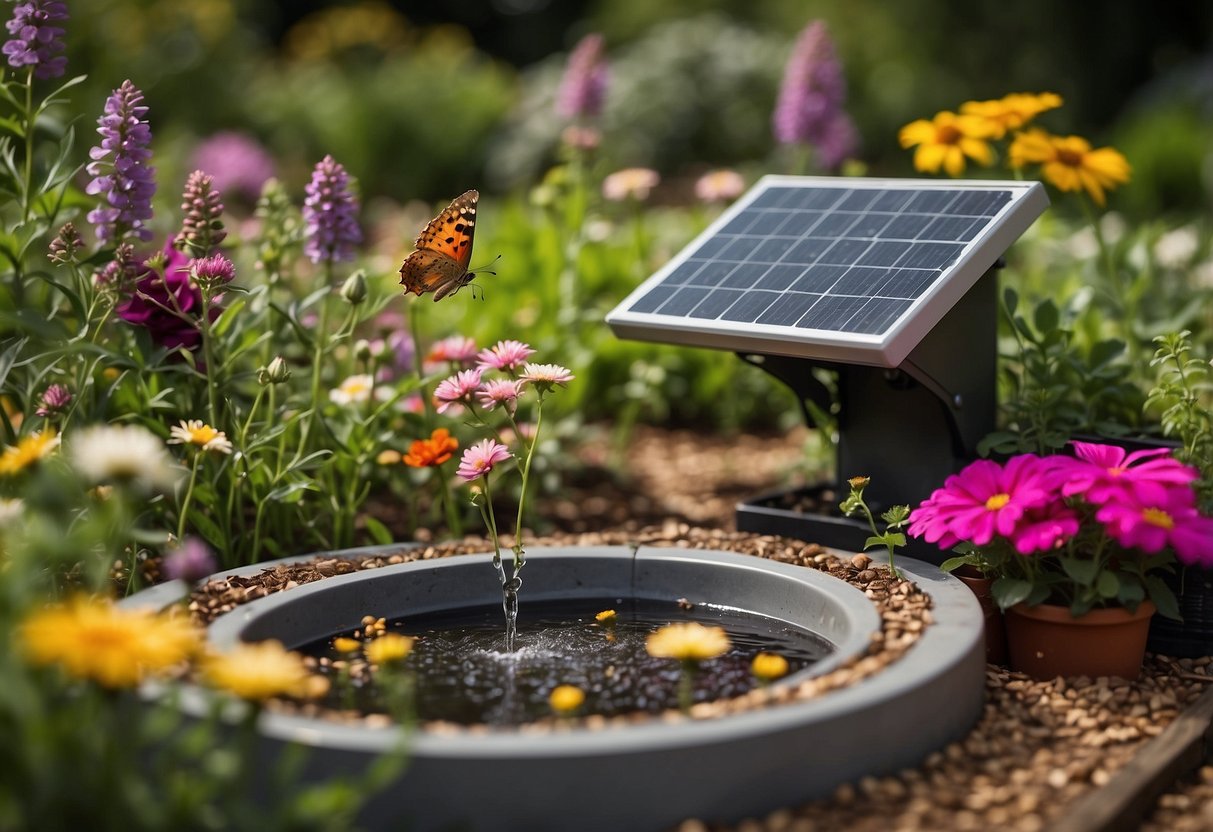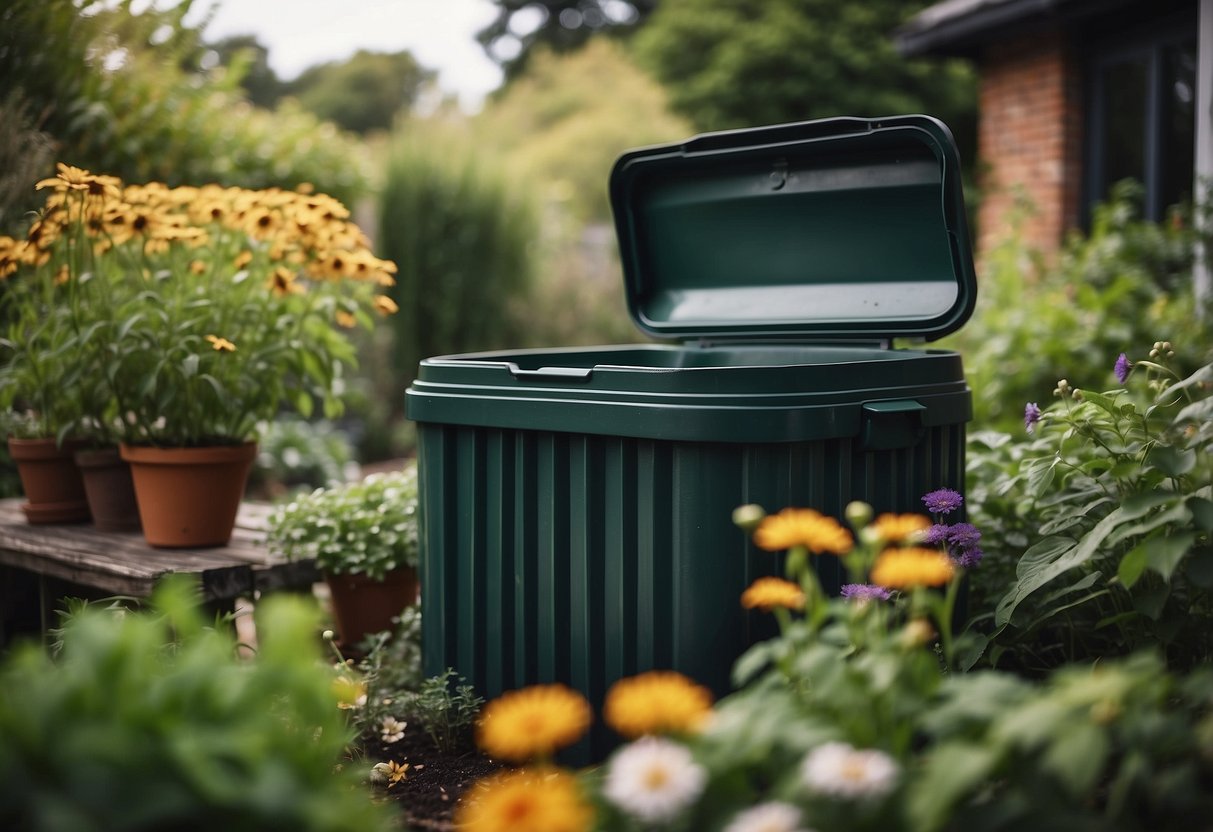Sustainable Garden Ideas: Easy Tips for an Eco-Friendly Backyard
Creating a sustainable garden is an exciting way to contribute to the environment while enjoying the beauty and benefits of a thriving outdoor space. It’s about making choices that support the ecosystem, conserve resources, and create a healthier environment for both plants and wildlife. Why should you consider sustainable gardening? It helps reduce waste, save water, and promote biodiversity right in your backyard.

With easy steps and thoughtful planning, you can transform your garden into a green haven. Sustainable practices not only benefit the earth but also make your gardening more efficient and rewarding. Embracing sustainable garden ideas can lead to a more vibrant and resilient garden that brings endless joy and satisfaction.
1) Rainwater Harvesting System

A rainwater harvesting system is a smart way to make your garden more sustainable. By collecting rainwater, you can reduce your reliance on municipal water.
Set up gutters and downspouts to direct rain into barrels or tanks. This captured water can be used to keep your plants hydrated.
Regularly maintain your system to ensure clean water. Adding a simple filter can help remove debris. Learn more about efficient rainwater harvesting from this guide.
2) Compost Bin

Creating a compost bin is a fantastic way to recycle kitchen scraps and yard waste. It helps reduce landfill waste and provides valuable nutrients for your garden.
You can make a simple compost bin from 5-gallon buckets or reclaimed wood. Position the bin in a sunny spot, layer greens and browns, and turn it occasionally to speed up the process.
A compost bin not only helps the environment but also gives you rich soil for your plants. It’s an easy and rewarding project to start.
3) Native Plants

Using native plants in your garden is a great way to support local wildlife and promote biodiversity. These plants are well-adapted to your region’s climate and soil, making them easier to care for.
Native plants also require less water and fewer pesticides, which can save you time and money. Plus, they attract beneficial insects, birds, and other wildlife to your garden.
For more ideas and design plans, visit Grow Native! and Wild Ones.
4) Vertical Garden

A vertical garden is perfect for small spaces. You can add planters to a wall or fence. This not only saves space but also adds a green touch to your home.
Using materials like wooden pallets or wire mesh panels can help you build your vertical garden. You can even check out these ideas for vertical gardening with terracotta planters.
For a more creative touch, try using stacked boxes. This allows you to grow edible plants in a compact area.
5) Bee Hotel

A bee hotel is a great addition to your garden, helping to support solitary bees. Unlike honeybees, these bees don’t live in hives but still play a big role in pollination.
You can build a bee hotel using materials like bamboo, wood, and straw. Drill holes of various sizes into wood blocks to create nesting spots for the bees.
Place your bee hotel in a sunny spot facing south or southeast. Bees like warmth and will thrive with plenty of sunlight. Watch as they bring nectar and pollen to their new home, helping your garden flourish. Learn more about bee hotels from Homes & Gardens.
6) Permaculture Garden Bed

A permaculture garden bed is a great way to grow plants sustainably. It focuses on working with nature, not against it.
Start by choosing a spot with good sunlight. It’s best to go for no-till and one-dig methods to keep the soil healthy.
Use sheet mulching for quick results. This method adds layers of organic material to enrich the soil.
Add compost to improve soil fertility. It helps plants grow better without the need for chemical fertilizers.
7) Solar Garden Lights

Solar garden lights are a great way to brighten up your yard while saving energy. These lights use sunlight to charge during the day and automatically turn on at night. They are easy to install and require minimal maintenance.
There are many styles to choose from. For example, you might like solar garden flower lights, which can add a magical touch to your flower beds.
Another option is solar pathway lights, which can enhance security and make your paths safer to walk on. Try these solutions to add charm and practicality to your garden.
8) Worm Farm

A worm farm can be a great addition to your garden. It helps turn kitchen scraps into nutrient-rich compost, known as vermicompost.
Start by getting a worm farm setup. You can buy a kit or make your own.
Add bedding like shredded newspaper and a bit of soil. Introduce your worms, and soon, they’ll be busy turning waste into valuable compost.
Don’t forget to add food scraps regularly and keep the bedding moist. This practice can support your plants and reduce kitchen waste at the same time.
9) Organic Fertilizer

Using organic fertilizer is a great way to grow a healthy garden. Organic options, like cow manure, offer a good mix of nutrients. Make sure it is aged to avoid burning your plants.
Another option is chicken manure. Compost it before use to ensure it’s safe for your garden.
For a versatile choice, consider using a premium blend plant food. This type of fertilizer supports a variety of plants, helping them grow strong and healthy.
10) No-Dig Garden Beds

No-dig garden beds are a great way to grow a garden without all the back-breaking work. You don’t have to turn the soil or dig deep holes.
Instead, you build up layers of organic materials right on top of the soil. This creates a rich growing environment.
Start by putting down cardboard or newspaper to smother the grass and weeds. Then, add layers of compost, straw, and other organic matter. Before you know it, you’ll have a healthy, thriving garden.
Using a no-dig method can help you reduce weeds and maintain soil health. For more guidance, check out Deep Green Permaculture.
Benefits Of A Sustainable Garden

A sustainable garden offers significant advantages for both the environment and your health. These benefits make your gardening efforts more rewarding and impactful.
Environmental Impact
A sustainable garden helps protect the environment in various ways. By using practices like companion planting and homemade compost, you can reduce the need for chemical fertilizers. This prevents harmful runoff into water sources and keeps your plants healthier.
Collecting and using rainwater or gray water for irrigation reduces reliance on municipal water supplies. This practice conserves water, a resource that is becoming increasingly scarce.
Plants that are native to your area require less water, pesticides, and fertilizers. Including them in your garden can help increase carbon storage in soil and reduce your garden’s carbon footprint.
Health Advantages
Growing your own food in a sustainable garden offers many health benefits. Fresh fruits, vegetables, and herbs are more nutritious because they are free from pesticides and other chemicals. Eating homegrown produce can lead to a healthier diet.
Gardening is also a great form of physical exercise. Activities like planting, weeding, and watering help you stay active. Time spent in the garden can reduce stress and improve mental health.
Using sustainable methods ensures that the food you eat is safe and wholesome. Techniques like mulching conserve soil moisture and reduce weed growth, making your gardening tasks easier and more enjoyable.
Planning Your Sustainable Garden

Creating a sustainable garden requires thoughtful planning. Focus on plant selection, maintaining soil health, and using water wisely to ensure your garden thrives while being eco-friendly.
Choosing The Right Plants
Choose native plants, as they are best suited to your local climate and soil. These plants need less water and fewer pesticides. Consider adding ground covers like stonecrop and creeping thyme because they help prevent soil erosion and reduce moisture loss.
Companion planting is another technique where certain plants benefit each other when grown together. For instance, planting marigolds with vegetables can deter pests naturally.
Perennials are a great option as well. They return year after year, requiring less frequent planting and providing consistent coverage. Plants that attract pollinators like bees and butterflies also contribute to a healthy garden ecosystem.
Soil Health And Composting
Healthy soil is the foundation of a sustainable garden. Composting is one way to enrich your soil. Use kitchen scraps like vegetable peels, coffee grounds, and eggshells to create nutrient-rich compost.
Add organic matter to your soil to improve its structure and water retention. Mulching with leaves or straw helps retain soil moisture and suppress weeds.
Test your soil to understand its nutrient levels and pH balance. This will help you determine what amendments are necessary. Avoid chemical fertilizers, as they can harm the environment. Instead, use organic fertilizers like compost tea or worm castings.
Water Conservation Techniques
Water conservation is essential in a sustainable garden. Collecting rainwater in barrels or large containers reduces the demand on tap water. Use drip irrigation systems to deliver water directly to plant roots, minimizing evaporation and runoff.
Permeable surfaces like gravel or mulch allow rainwater to soak into the ground, reducing erosion and water waste. Group plants with similar water needs together to optimize watering efficiency.
Consider using gray water from household use for irrigation. This can include water from showers or washing machines, provided it is free of harmful chemicals.







